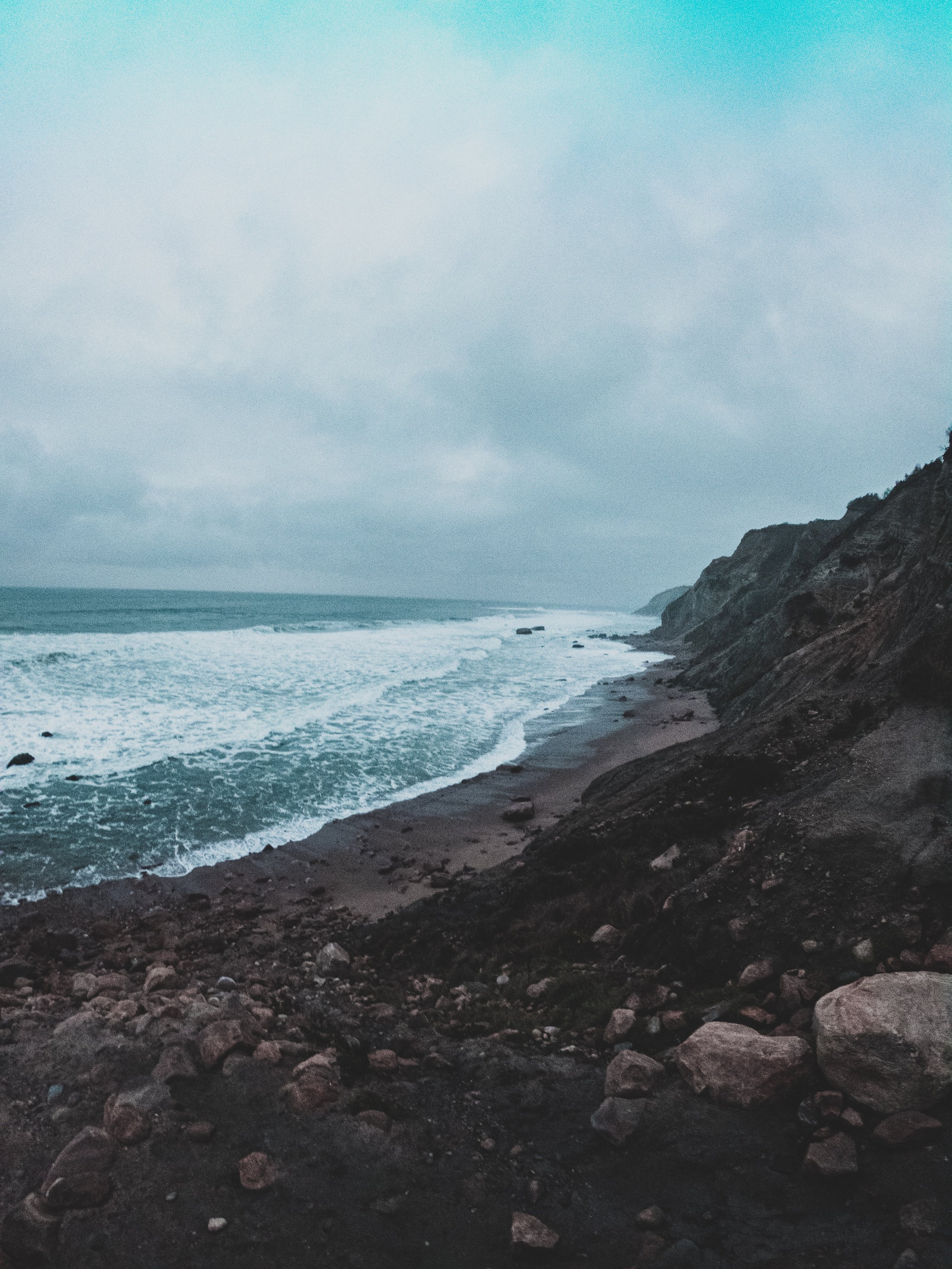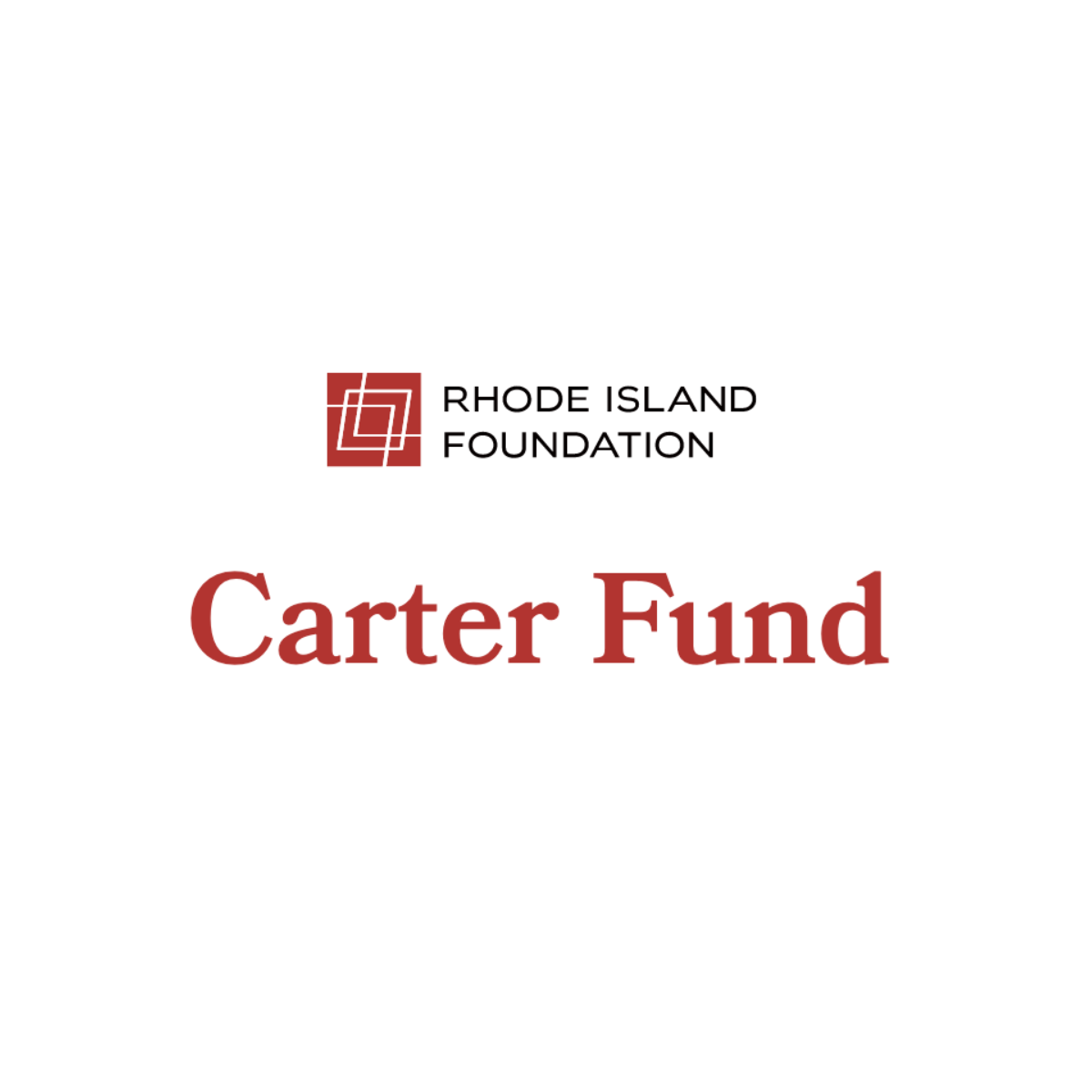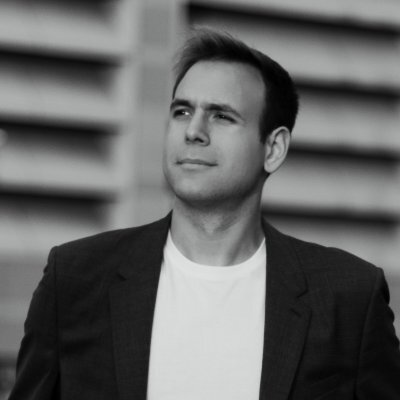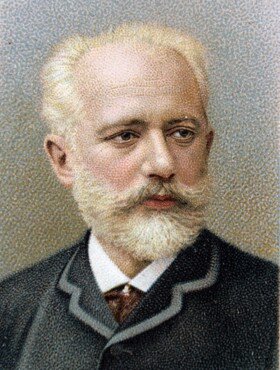
Season Opener Concert
This concert is sponsored by Barry Wall, M.D., in recognition that October is Breast Cancer Awareness Month. Knowledge and early detection saves lives. Please visit nationalbreastcancer.org to learn more. This concert is dedicated to those living with breast cancer, and to the memory of Susan Wall Jones.
Program
Huapango
José Pablo Moncayo (1912-1958)
Dark Sky Soliloquy
Stephanie Ann Boyd (1990- )
INTERMISSION
Symphony No. 6 in B minor, Op. 74
(“Pathétique”)
Pyotr Ilyich Tchaikovsky (1840-1893)
I. Adagio—Allegro non troppo
II. Allegro con grazia
III. Allegro molto vivace
IV. Finale: Adagio lamentoso
Music Director’s Note
During the COVID-19 pandemic, everyone everywhere has been faced with impossible challenges to virtually all aspects of daily life and the cessation of social activities, in order to safely manage the health risks of both their loved ones and themselves.
As a conductor and citizen artist, I have always believed that musicians have a far-reaching capacity to bring people together, whether in-person at the concert hall or over youtube. When I think of what an orchestra is at its core, I see a platform upon which different groups of people work together in pursuit of one common goal, and in it you discover a powerful model for teamwork and community-building.
Our NaBSCO musicians and board members have exhibited this principle beautifully in navigating the last 18+ months and our program tonight has an overarching theme of resilience, acceptance, and home. Our orchestra is our home and tonight we welcome you to it. Here is a brief overview of this evening’s program:
Moncayo’s Huapango, often regarded as the ‘second national anthem’ of Mexico is a piece bursting with excitement and energy. The pulsating rhythms and dynamic contrasts will be stuck in your head for days and represent exactly how each musician feels in making music together after such a long hiatus!
Dark Sky Soliloquy, composed by my dear friend and colleague, Stephanie Ann Boyd, for strings is a meditation on the nature of the night sky. Serene, wondrous, silent, and at the same time unknowable and overwhelming, the night sky constantly reminds us of the wonders of the universe whilst provoking our curiosity as to our place within it.
In approaching what to program for the first concert coming out of the pandemic, the only piece that I believed could capture what these last 18+ months have felt like for so many is the Tchaikovsky 6th. Remarking on an earlier sketch of the work, Tchaikovsky said:
“The ultimate essence … of the symphony is Life. First part – all impulse, passion, confidence, thirst for activity. Must be short (the finale death – result of collapse). Second part love: third disappointments; fourth ends dying away (also short).”
So much of life during the pandemic echoes these words, and the 6th Symphony begins in grief and ends not in triumph but rather in the solemn acceptance of the many joys and tribulations that life grants each and every one of us. Coming out of the pandemic will hardly be in triumph, but as Tchaikovsky’s 6th reminds us, we are entrusted to accept and take the responsibility to work together with renewed humility and care for ourselves and each other.
With love and respect,
Kristo
About the Conductor
Based in Boston, MA (USA), Kristo Kondakçi is the music director of the Kendall Square Orchestra, the Narragansett Bay Symphony, and the founder and conductor of the critically- acclaimed Eureka Ensemble. He also makes appearances as guest conductor with the National Orchestra of Albania and the Vienna Summer Music Festival.
He has appeared with Boston’s Enigma Chamber Opera featuring sold-out performances of Benjamin Britten’s “The Turn of the Screw”
Kondakçi has served on the faculty at University of Massachusetts Amherst as interim director of orchestral studies (2019). He has also made a significant contribution to Mahler research through his reconstruction of the original version of Mahler’s 1st Symphony (2012). He currently teaches young conductors in a private studio and coaches chamber music at Harvard University as a non- resident music tutor with Pforzheimer House.
Off the podium as a creative entrepreneur, Kondakçi has helped launch six different non-profits dedicated to enacting social change, including Boston Hope Music (2020), an organization devoted to using music to aid the healing and recovery of COVID-19 patients, frontline healthcare workers in partnership with New England Conservatory and Mass General Hospital; and, the Women’s Chorus (2018), a choral program for women experiencing homelessness & poverty in Boston, that has engaged more than 100 people, ages 17 to 82, in partnership with Women’s Lunch Place.
As a speaker and leadership coach, Kondakçi works closely with corporate and executive leaders from around the globe on leadership development in collaboration with Kendall Square Orchestra. He has given a TEDx@ BeaconStreet talk on the power of classical music to enact social change (2018), presented on the role of the orchestra and community at the national conference of the League of American Orchestras (2019), and makes regular appearances at schools, companies, and other institutions to advocate for the role music can play in addressing social issues. He also sits on the Arts Advisory Council for BioMed Realty’s 585 Third Street complex in Cambridge and the Arts Access Grant panel of the Rhode Island Council on the Arts.
Kondakçi resides in Boston, MA with his fiancé and spends his free time gardening, hiking, and is an avid reader.
About the Composer
Michigan-born, Manhattan-based American composer Stephanie Ann Boyd (b. 1990) writes melodic music about women’s memoirs and the natural world for symphonic and chamber ensembles. Her work has been performed in nearly all 50 states and has been commissioned by musicians and organizations in 37 countries. Boyd’s five ballets include works choreographed by New York City Ballet principal dancers Lauren Lovette, Ashley Bouder, NYCB soloist Peter Walker, and
XAOC Contemporary Ballet’s Eryn Renee Young. Eero, a ballet commissioned by Access Contemporary Music and Open House New York, was written for the grand opening of the TWA Hotel at JFK Airport. She holds degrees from Roosevelt University and New England Conservatory. Boyd was one of the last violin students of renowned pedagogue John Kendall, and her music has been praised as “attractive lyricism” (Gramophone), “[with] ethereal dissonances” (Boston Globe), “[music that] didn’t let itself be eclipsed” (Texas Classical Review), “arrestingly poetic” (BMOP), and “wide ranging, imaginative” (Portland Press Herald).

The Orchestra
FIRST VIOLINS
Section sponsored by Bruce Goldstein
Emily Chen, Concertmaster
William Farber
Benjamin Boatwright
Margaret Geoga #
Bruce Goldstein
Hilary Hartlaub
Rebecca Johnson
Patricia Wold
SECOND VIOLINS
Christina Dickson-Brownell, Principal
Kevin Koehler
Gail Agronick #
Eric Anderson
Anderson Gray
Moira Greenson
Ivan Kirschner
Raman Shah
Susan Weinman #
VIOLAS
Michael Raymond, Principal
Kathryn Flanders
Amanda Chang
Gregory Henninger
Raymond Kwan
Lauren Marini
Benjamin Roth
CELLOS
Kari Juusela, Principal #
Alan Toda Ambaras
Paul D’Angelo
Donna Jeffrey
Val Korennoy
BASSES
Section sponsored by Barry Wall
Barry Wall, Principal
Logan Halterman #
David Kelcher #
FLUTES
Section sponsored by Amy Goldstein
John Curran, Principal
Amy Goldstein
Susan Woythaler #
PICCOLO
Catherine Snell
OBOES
Crikkett Young, Principal #
Matt Butterfield
Jennifer Stanton
CLARINETS
Charles Johnson, Principal
Vincent Mattera
BASSOONS
Saul Woythaler, Principal #
Keith A. Brown #
Mark Thornton
HORNS
KatyTetreault, Principal
Ben Franzblau
Susan Shippee
Susan Winterbottom-Shadday
TRUMPETS
Mary St. Laurent Sheehan, Acting Principal
Eric Drew
Craig Shadday
TROMBONES
Kevin Kane, Principal
Tom Kane
Emma Pacheco
TUBA
Tom Gregory, Principal
TIMPANI
Michael Kaufman Memorial Chair
Benjamin J. Keating
PERCUSSION
Melissa Cabral
Lauren Cenedella
Robert Franzblau
HARP
Terri Viveiros
# Sponsored musician
Program Notes
MONCAYO Huapango
A percussionist who worked mainly as a conductor, José Moncayo wrote a couple of symphonies, an opera, and a ballet, among a relatively modest output. In 1941, Carlos Chávez asked Moncayo to write a piece based on the popular music of the Veracruz area on the Gulf of Mexico for the Symphony Orchestra of Mexico, in which Moncayo had played as a percussionist since it was founded in 1932.
“Blas Galindo [a fellow composer and colleague] and I went to Alvarado, one of the places where folkloric music is preserved in its most pure form; we were collecting melodies, rhythms, and instrumentations for several days,” Moncayo recalled for one of his students. “The transcription of it was very difficult because the huapangueros never sang the same melody twice in the same way. When I came back, I showed the collected material to Candelario Huízar, who gave me a piece of advice that I will always be grateful for: ‘Introduce the material first in the same way you heard it and develop it later according to your own ideas.’ And I did it, and the result is almost satisfactory for me.”
Moncayo incorporated three traditional Veracruz huapangos – “Siqui-Siri,” “Balajú,” and “El Gavilán” – into his orchestral masterpiece. Colorfully orchestrated with an emphasis on instruments typical of the Veracruz style (trumpet, harp, and violins) and driven by the distinctive huapango rhythm, Huapango has become an enduring classic. Chávez premiered it in August 1941 at the Palacio de Bellas Artes in Mexico City.
BOYD Dark Sky Soliloquy
I had the opportunity to visit my one and only childhood best friend , Jane, for the first time in 10 years. Jane and her mother Mary have both been tremendously influential in my artistic endeavors, and now they have something very special in common: they both study the stars; Mary as a brilliant astrologer and Jane as a NYU Gallatin School astronomy student. This piece is both dedicated to their influence and inspired by their shared fascination with our universe.
This piece was aptly written over four consecutive late spring evenings in my childhood bedroom with the windows open, letting in the eerie voices of the highway close by. I grew up listening to the night choir of the highway, hearing its melodies and eagerly absorbing its earthly harmonies, many of which have been incorporated into this piece.
As the hosts spin round and round
the ethereal sound of the heavens is spun
the melody, in fourths and thirds
is given in ancient tempo
– Stephanie Ann Boyd
TCHAIKOVSKY Symphony No. 6 “Pathétique”
The emotional turbulence of Tchaikovsky’s mature masterpieces often suggests a confessional quality around which it’s tempting to construct a narrative. Compounding this tendency is the simple fact that Tchaikovsky was a particular favorite in the early days of radio and the recording industry. This is when classical music was first becoming available to a mass audience, and such narratives abounded as a strategy for making sure the music didn’t seem forbidding. Nowadays it’s with bemused detachment that we come across the impossibly flowery commentaries (quite apart from Tchaikovsky’s own descriptions) to which the composer was subjected. They’re of the stereotypical “fickle finger of fate” variety, where melodies chastely pick themselves up despite bruised wings to soar aloft, newly armed for spiritual victory. Tchaikovsky’s popularity as a source for Hollywood scores and Tin Pan Alley tunes of that period is hardly coincidental.
All of this eventually led to an unfortunate critical backlash. Tchaikovsky became a whipping boy for the worst excesses of Romanticism: sentimental self-indulgence, emotional exposure, even an out-of-control “hysteria” – “too much information” was the uncomfortable response from the guardians of taste. But the court of popular opinion has proved more far-sighted than that of the critics. Tchaikovsky’s best music has remained firmly entrenched in the repertoire because it “says” something far richer, more passionate, and more profoundly moving than any dated characterization could convey.
Tchaikovsky himself showed ambivalence about the issue of program music. For his Fourth Symphony he supplied an elaborate program detailing the content of each movement, centered around the idea of Fate. The most programmatic of all his symphonies, the unnumbered Manfred Symphony of 1885, is based on Lord Byron’s poetic drama and its Faustian hero. The Fifth Symphony seems to occupy a middle ground. The composer supplied a bare minimal description in his working notebook.
By the time of his final Symphony No. 6, Tchaikovsky developed an esoteric, “private,” and unpublished program. Nevertheless, he drew attention to it by the somewhat provocative working subtitle, “Program Symphony,” and by the dedication to “Bob” Davidov, the nephew with whom he was in love in his final decade. According to one of the many legends that surround the work, Tchaikovsky’s brother Modest (as he later claimed) came up with the name “Pathétique” – which suggests “impassioned suffering” in its Russian context. Whether or not the composer acquiesced to this christening before his sudden death just a little over a week after the world premiere (Oct. 28, 1893 in St. Petersburg) it has come to seem uncannily suitable for the devastating psychological drama the Symphony lays bare.
The circumstances of Tchaikovsky’s death have further enshrouded the Pathétique in mystery: was an accidental drink of cholera-contaminated water what killed him, or did the “scandal” of his gay affairs result in Tchaikovsky submitting to a kind of Socratic suicide? The debate – much like the one surrounding Shostakovich – rages on unresolved. Meanwhile, a long series of commentators claiming to decipher the Symphony’s internal musical codes have contributed to its aura of intrigue, thereby ensuring that this remains the most controversial of all his works (and indeed of the symphonic repertoire).
The first movement – around twice the length of each of the other three – immediately ushers us into a world of bleak despair that attains a crushing intensity. Tchaikovsky employs the mastery of his technical skill to give his emotional power resilient shape. He manages his traditional orchestral forces in unexpected ways, with brass chorales as rousing as Judgment Day and delicately sprung wind solos. Even the composer’s trademark roulades possess a shattering, nervous energy that seems unique here.
In the middle of the movement, the explosive rupturing of the pppppp called for in the score must come as a shock, not a hammy and bathetic gesture. This is just one of the formidable challenges interpreters of the Pathétique face, along with establishing a coherence behind what seem on the surface such sharply marked-off, disparate sections (for example, the pause and tempo change before the indelibly lyrical second theme, inspired by Don José’s “Flower Song” in Carmen, a favorite opera of the fate-obsessed Tchaikovsky).
Two inner movements of entirely different character turn out to be interludes rather than actual shifts of direction. The second movement’s flowing, dance-like charm is given a subtle displacement through the use of 5/4 meter (two beats followed by the triple pattern of the waltz). In the third movement, Tchaikovsky presents a blazing but hollowly triumphant, brass-reinforced march that revels in aggressive, swaggering rhythms.
It’s often been pointed out that had Tchaikovsky simply switched the order of the final two movements, he would have preserved the optimistic, Beethovenian model of light over darkness. Yet by reversing that model and ending with the nihilistic, dying fall of the Adagio (the same tempo with which the Symphony began), he introduces a radically new concept of the symphonic journey (Mahler’s Ninth would follow a similar pattern). Indeed, Tchaikovsky writes about his novel approach to form here as an aspect that excited his creative fancy. The valedictory plunge into silence from a sustained B-minor chord deep in the strings sets the stage for a new century of bleak requiems. Tchaikovsky declared that he had put his “whole soul into this work.” And there it remains – beyond all attempts at reductive explanations – for us to encounter anew.
– Thomas May
Special Thanks to:
-
Rhode Island State Council on the Arts
Funding provided in part by a grant from RISCA through an appropriation by the Rhode Island General Assembly, a grant from the National Endowment for the Arts, and private funders.

-
Rhode Island Philharmonic Orchestra & Music School
For the use of rehearsal and storage space as well as for their financial and administrative support.

-
The Champlin Foundation
For their support.

-
The Carter Fund at the Rhode Island Foundation
For its generous and continued support.

-
The June Rockwell Levy Foundation
For their support.

Thank you to all our donors!
Agronick Schwartz Family
Hisham Aharon
Anonymous
Elaine Auger
Victoria Baeger
William S. Barrett
Eric Bell
Miriam & Robert Berkelhammer
Vicki Blaser
Eugene Brock
Winifred and Richard Brownell
Audrey and Brian Cardany
Elisabeth Carter
Kristin Chartier
Emily Chen
Barbara Chernow & William Farber
Citizens Bank
John & Beth Curran
Paul & Elaine D’Angelo
Mike Daniels
Elizabeth Dibble
William Dickson
Linda & Gerald Diebold
Jerry & Amy Dorfman
Ann Drury
Vic Dvorak
John Eells
Justin Enright
Abby Farber & David Robinson
Scott & Kim Friend
Ronald & Ruth Gadbois
Margaret Geoga
Amy & Bruce Goldstein
Anderson Gray
Tom Gregory
David & Robert Hall
Hilary Hartlaub
Lauren Henderson
Tatiana Holway
Erin Hub
Pamela & David Hunter
Josceline & Julia Huxley
Alan & Susan Hyman
David Jeannotte
Donna Jeffrey
Charles Johnson
Rebecca Johnson
Kari Juusela
Alicia Kelley
Ivan Kirschner
Olivia Kleyla
Matt Knippel
Faith Knowles
Denise Kochanski
Mr. & Mrs. Donald Koehler
Kevin Koehler
William Korennoy
Andrew Larsen
Philip Leis
James Li & Mae Shen
Joan Lusk
Genevieve Martin
Vincent Mattera
Ronald Markoff
Charrel Maxwell
Kathy Mordoe
Jane Nelson
Newport Performing Arts Center
Barbara Niehus
Leila Palmieri
George M. Prescott
Michael Raymond
Andrew & Jennifer Reich
Jane Revkin
Robert Ricigliano
Andrew & Susan Ripanti
Joseph A. Ripanti
Lynn Rognsvoog
Andy Rosenzweig
Fred and Marcia Rosenzweig
Sally Routh
Anna Ruggieri
Steven Ruse
Judy & Greg Schmitt
Matthew Sears
Erika Sevetson
Ruby Shalansky
Steven Shalansky
Elizabeth Shealy
Mary St. Laurent-Sheehan
Susan Shippee
Carlos Simpson
John Simpson
Joseleyne Slade
Shannon Smith
Jennifer Stanton
James Sochodolski
Don & Jane Stanford
Donna Sweeney
Katelain Tavares
Katy Tetreault
Andrea Thomas
Jeffrey & Donna Van Keuren
Barry Wall
Susan Weinman
Weybosset Research & Management
Bridgit Wilson
Susan Winterbottom-Shadday
Warren & Roselyn Winterbottom
Aaron & Patricia Wold
Constance Worthington
Saul Woythaler
Susan Woythaler
Tom Wynsen
Crikkett Young
Helen & Bev Young




